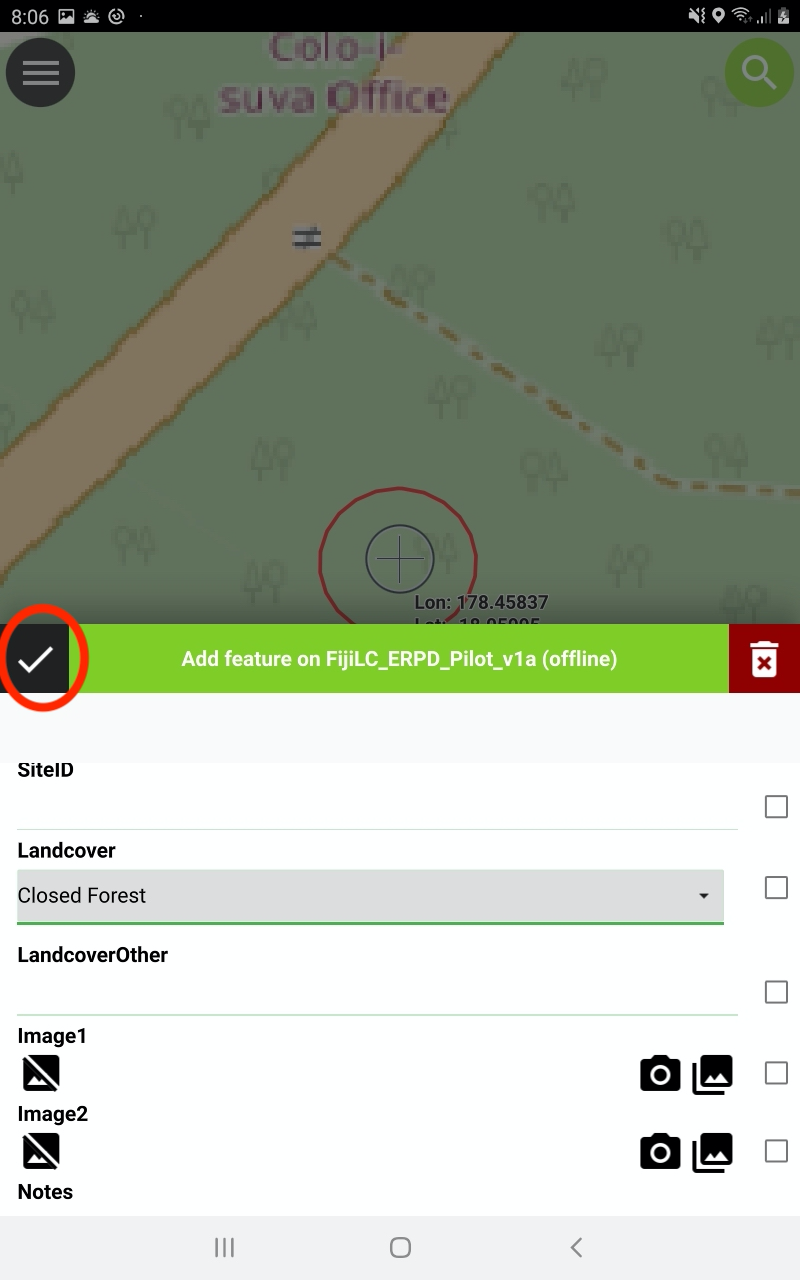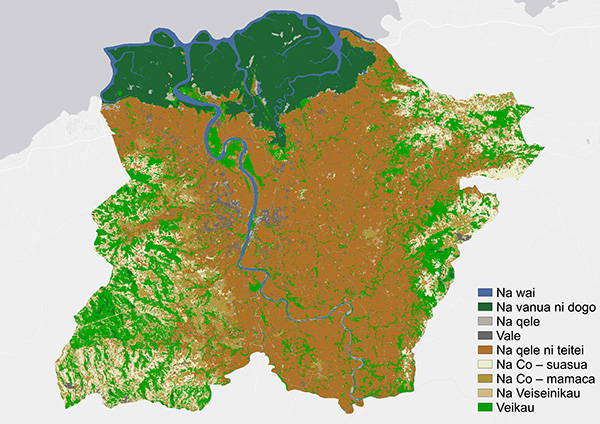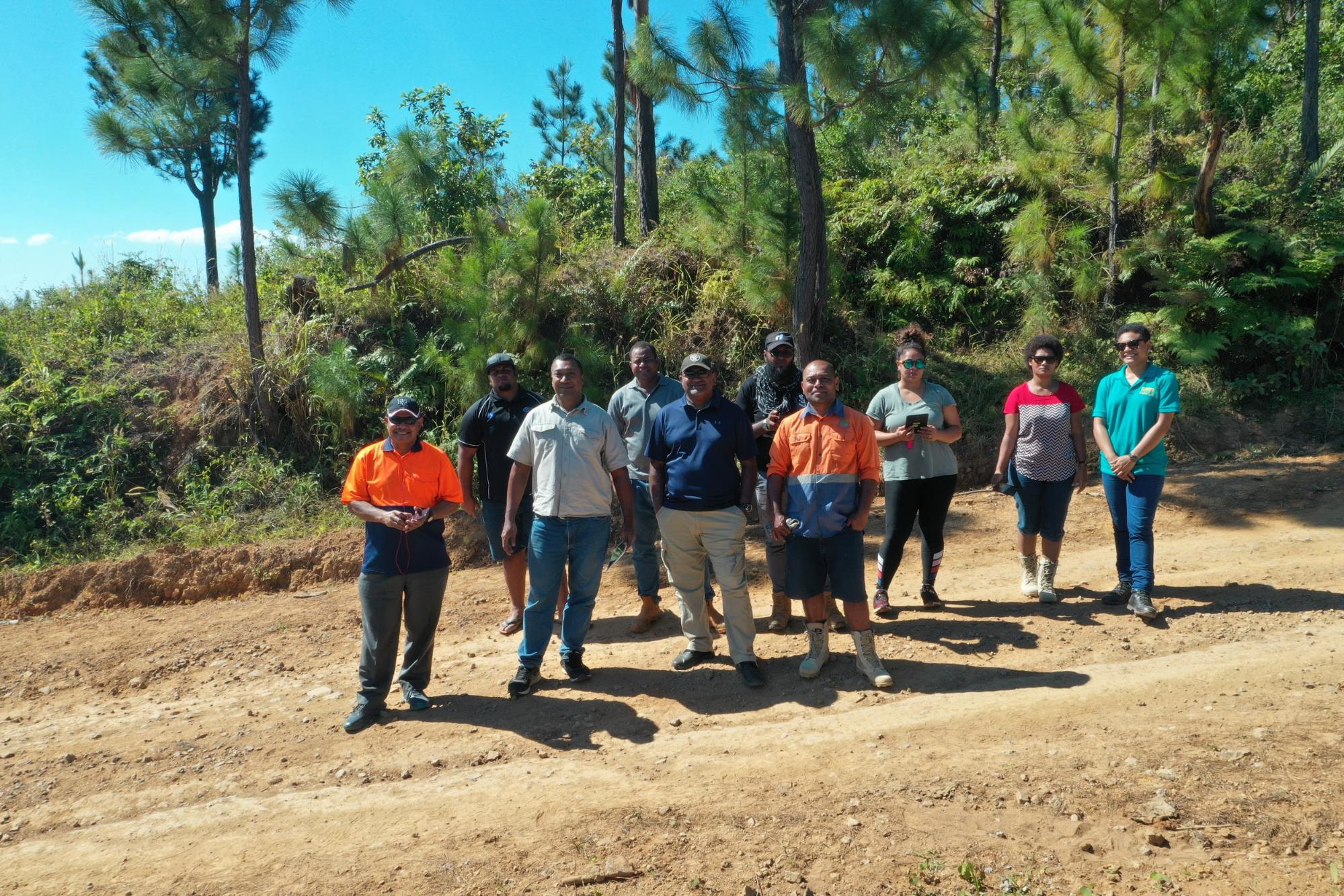Ground Truth Data Collection
The original version of this document is located at https://docs.qfield.org/success-stories/lulc-mapping-fiji
Ground Truth Data Collection Using QField for LULC Mapping in Fiji
By Kevin Davies, School of Geosciences, The University of Sydney
Purpose
Communities in Fiji rely on landscape resources for agricultural and
forestry-related activities. Accurate mapping and monitoring patterns of
land use and land cover (LULC) over time at an appropriate scale is
important for informing landscape management, policies, and
climate-smart sustainable development.
Fiji’s Ministry of Forestry is collaboratively developing an approach
with the Universities of Sydney (USYD), Western Australia (UWA) and the
South Pacific (USP) to produce an inter-annual LULC map using Sentinel-2
satellite data, and freely available geospatial tools. QFIeld is being
used for collecting ground truth data in the landscape for training and
validation of the LULC map.
Workflow
- The LULC ground truth collection form was designed in QGIS.
- A set of predefined ground truth plot locations were generated based
on a stratification of satellite data within the study area. - The form, predefined plots, and appropriate offline background
layers were packaged in QGIS and then loaded onto each of the
tablets used by the field team (Figure 1). - A team member navigated to a predefined plot in QField and created a
ground truth point at the location and labelled the point with the
most appropriate pre-defined LULC class (Figure 2). - Data collected from all tablets was combined into one ground truth
data collection in QGIS. - Image interpretation using the OpenForis platform will be used to
increase the number of ground truth plots. - The final ground truth collection will be imported into Google Earth
Engine to produce the LULC map and calculate the map accuracy.


Preliminary Results and Future Work
An example of a preliminary land cover map is shown in Figure 3. An
important objective from our work is to transfer skills and build
capacity with local stakeholders to continue to update the LULC map on
an annual basis as well as to expand the map to include other
communities, catchments and forestry areas across Fiji. This capacity
building will include iterative stakeholder consultation, online
training materials, field and classroom training workshops, and
collaborative fieldwork.

Acknowledgement
We would like to thank the field team from the Fiji Ministry of Forestry
especially Viliame Tupua and Renata Varea (USP). The project was funded
by the Australian Centre for International Agricultural Research (ACIAR;
ASEM/2016/101).

Related Articles
Data collection of malaria transmitting mosquitoes
The original version of this document is located at https://docs.qfield.org/success-stories/mosquito-malario-ground-truth-data-collection Use of Qfield in the context of ground-truth data collection work of malaria transmitting mosquitoes By Paul ...Data collection of rural water supply systems
The original version of this document is located at https://docs.qfield.org/success-stories/rwanda-rural-water Data collection by QGIS/QField for O&M work of rural water supply systems in Rwanda By Rural Water and Sanitation Services ...EXIF Data
The original version of this document is located at https://docs.qfield.org/reference/exif EXIF Data in QField When using the internal QField camera, images will be geotagged with various EXIF metadata fields. Below is a reference table listing the ...Supported Data Formats
The original version of this document is located at https://docs.qfield.org/reference/data-format Supported Data Formats QField supports a wide variety of formats via QGIS data providers and GDAL. This page offers a non-exhaustive list of supported ...Data Source Configuration
The original version of this document is located at https://docs.qfield.org/how-to/project-setup/hiding-legend-nodes Data Source Configuration ?️ Desktop preparation Frequently, you do not need to access the attributes of all the feature layers or ...